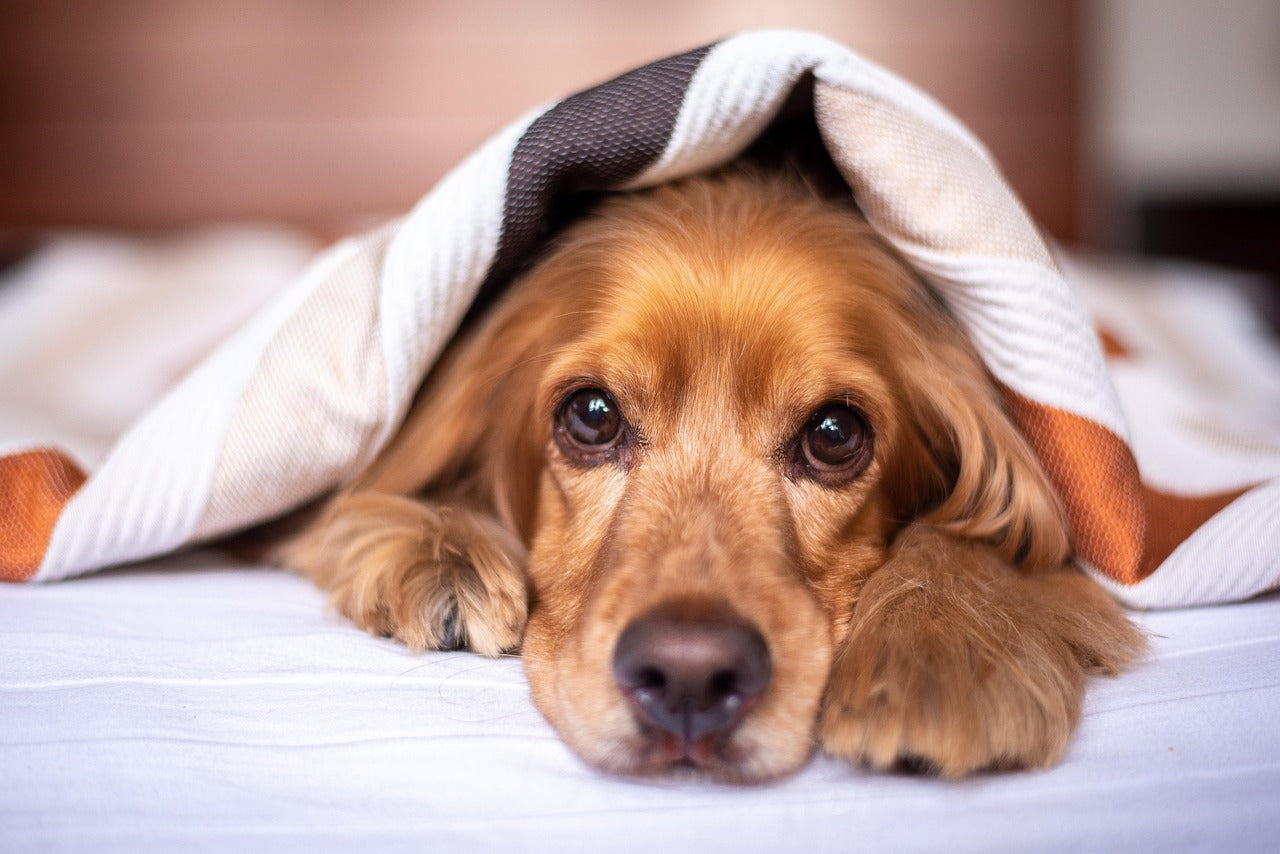A Complete Guide for Large Breed Dog Owners
Dog incontinence can be challenging for both pet parents and their pups — especially if you share your home with an active large breed like a Labrador Retriever. Whether caused by aging, injury, congenital conditions, or surgery, incontinence doesn’t have to mean constant messes or discomfort. With the right routine, tools, and patience, you can help your dog stay clean, healthy, and happy.
In this post, I’ll share practical, tried-and-true tips for dealing with a male dog’s incontinence, learned from years of caring for my own Labrador, Max. From selecting the right diaper to preventing skin irritation, this is your go-to guide for large breed dog hygiene.
1️⃣ Observe & Understand Your Dog’s Condition
Not all incontinence is the same. Before you decide on a care plan, figure out:
-
Can your dog urinate/defecate on their own?
-
Do they leak small amounts throughout the day?
-
Are accidents triggered by excitement, fear, or activity?
-
Is it a complete loss of control or occasional dribbling?
Max’s incontinence began after a spinal injury. While he can pass stool without assistance, he needs help fully emptying his bladder. This means expressing his bladder — gently applying pressure to release urine — several times a day. It may sound daunting, but once you learn the proper technique from a vet, it becomes part of the routine.
2️⃣ Learn the Basics of Dog Incontinence Care
Once you know the type of incontinence, educate yourself on management strategies. Helpful resources include:
-
A demonstration from your veterinarian on how to express the bladder.
-
YouTube tutorials from veterinary professionals.
-
Pet caregiver communities on social media for tips and encouragement.
When Max’s incontinence first started, it felt overwhelming. Sometimes his diaper would be soaked quickly; other times, hours would pass with no urination. Tracking these patterns was key to finding a solution.
3️⃣ Create a Routine & Keep a Care Log
Dogs thrive on consistency, and incontinence care is no different.
I started recording every bathroom break, diaper change, and accident in a notebook. Within weeks, I noticed Max’s schedule:
-
Urination 3 times a day kept his bladder from overfilling.
-
Bowel movements occurred in the morning and mid-day.
This record made it easier to spot changes — like the time Max struggled to urinate due to a urinary blockage, which required immediate vet attention.
4️⃣ Watch for Urinary Tract Infections (UTIs)
Dogs with incontinence are at higher risk for UTIs. Signs can include:
-
Strong or foul-smelling urine.
-
Increased leakage.
-
Discomfort during urination.
Max’s vet prescribed medication and a prescription diet to reduce UTI risk. Staying in close communication with your vet will help keep your dog’s urinary health in check.
5️⃣ Train for Calm Diaper Changes
Changing a diaper on a wiggly 70-pound Labrador is… an adventure. Teaching your dog to stand or lie still during cleaning will make your life infinitely easier. Reward calm behavior with treats or praise — consistency is key.
6️⃣ Choose the Right Diaper for Large Dogs
Every dog is different. For Max, the best fit was HoneyCare Disposable Dog Diapers, size XL. They:
-
Fit snugly without pinching.
-
Have a tail hole for comfort.
-
Offer excellent leak protection for heavy wetters.
Other large dog owners swear by:
-
Washable Wonders Reusable Diapers – Eco-friendly and customizable for special needs.
-
Pet Parents Washable Male Wraps – Perfect for male dogs needing targeted urinary protection

7️⃣ Expect Messes — and Be Prepared
Accidents will happen. Have these supplies ready:
-
Enzyme-based cleaners for urine odor.
-
A good mop or steam mop.
-
Disposable gloves.
-
Plenty of paper towels.
-
High-quality trash bags.
For stubborn carpet odors, I use a pressure washer attachment with hot water and pet-safe detergent — it works wonders.
8️⃣ Prioritize Hygiene & Skin Health
Large breed dogs with thick coats (like Labradors) are prone to urine scald and diaper rash, especially in humid climates.
To prevent this:
-
Trim the fur around the belly, genitals, and rear.
-
Use unscented pet wipes for cleaning.
-
Pat dry completely before putting on a new diaper.
-
In humid areas, a light dusting of pet-safe powder can help keep skin dry.
9️⃣ Pro Diaper Hack: Put Baby Diapers on Backwards
If you use baby diapers for your dog, put them on backwards so the tabs fasten on the back. This makes changes easier and more secure.
For dogs without tails or with amputations, sealing the leg holes with medical tape can prevent leakage.
🔟 Invest in Quality Cleaning Supplies
Incontinence care isn’t just about diapers — it’s about keeping your home fresh and your dog healthy. Stock up on:
-
Disinfectant sprays.
-
Pet-safe laundry detergent.
-
Grooming clippers for sanitary trims.
Final Thoughts
Caring for a large breed dog with incontinence isn’t always easy, but with the right tools, schedule, and mindset, it’s entirely manageable. Disposable dog diapers like HoneyCare offer a clean, convenient solution, while a consistent hygiene routine keeps your dog comfortable and your home spotless.
If you have the love and patience, you can absolutely give your dog the dignified, happy life they deserve — no matter their challenges.


Leave a comment